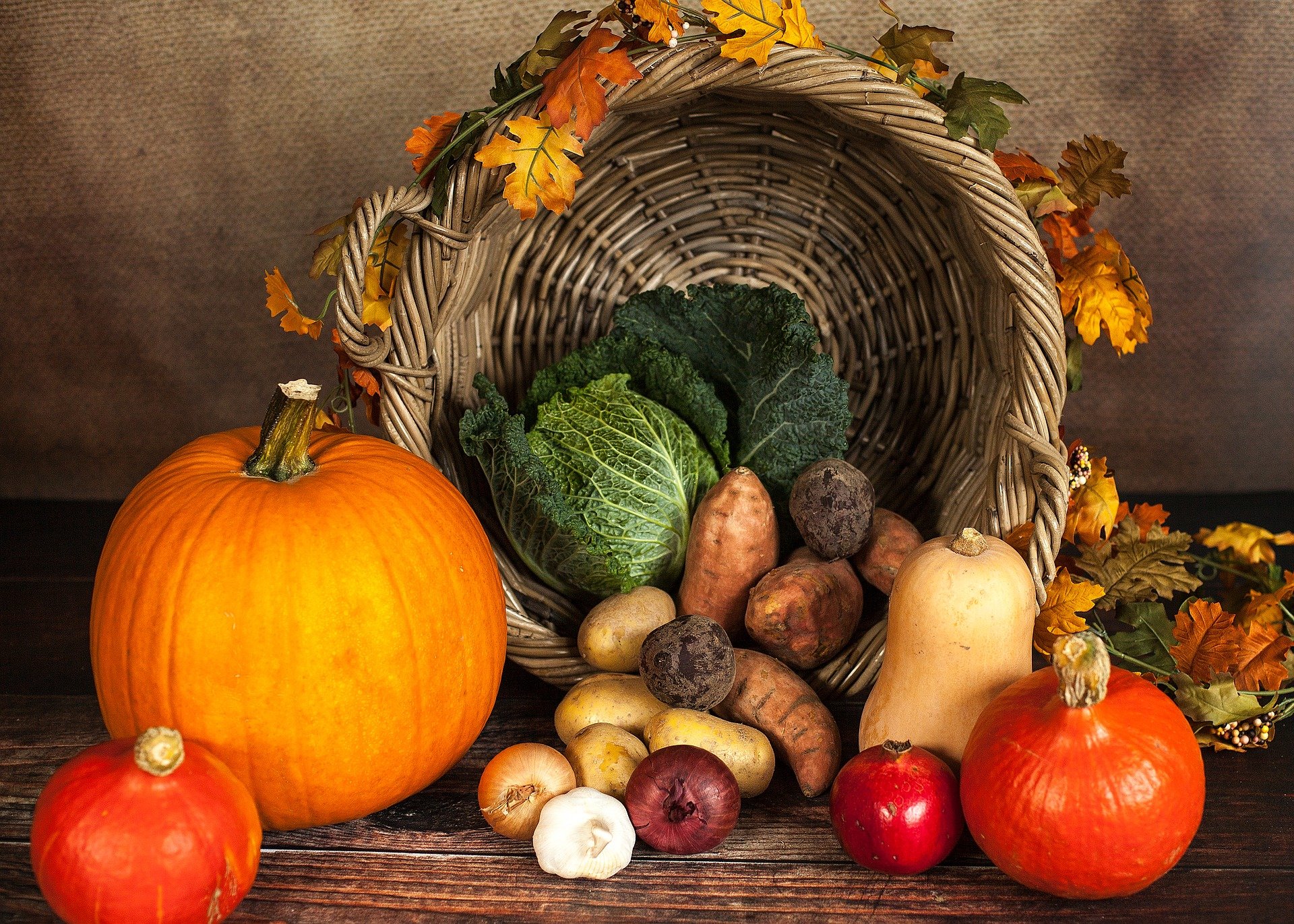
The A – Z Of Becoming Vegetarian
The A – Z Of Becoming Vegetarian
With more and more people making the conscious decision to leave meat out of their diet, we have compiled an A-Z list of the essentials you will need if you decide to go green!
The range of Vegetarian and Vegan options, whether they are vegetable-based or a meat substitute, has grown over recent years. Whole aisles in the supermarkets are dedicated to those who are not wanting, or unable to eat meat with variety and new flavours.
However, the substitute ‘easy options’ such as burgers, pies, steaks etc. usually come in packs of 2. For an individual or a couple, this is fantastic and well worth the change. But when you consider a family meal, a £2.30 pack of burgers suddenly becomes £4.60 or more for just one part of a meal.
For families on a budget – this is a problem!
So, here is a list of essentials, recipes, and alternatives for you to consider on your vegetarian journey.
A – Avocado: The avocado is one of just a few fruits that are high in protein. Without having the protein from meat in your diet, you need to find alternatives. Avocados are super versatile. They can be used as they are in salads and sandwiches, or recreated in smoothies or cakes.
B – Beans and Pulses: These will start to become the basis for many of your recipes. Being high in protein and fibre they are an easy alternative to replace meat. They are also cheap to buy, low in fat and will make any meal stretch. Good options to look at are lentils, cannellini beans, baked beans, butter beans, haricots, and peas to name a few.
C – Chickpeas: Chickpeas will become your new best friend. Being the main ingredient for falafel, hummus and also a staple in the predominantly vegetarian, Mediterranean and eastern cuisine. Chickpeas can also produce Aquafaba.
The water that they are cooked in, which can be drained out of a can, mimics the same effect as egg white in cooking, so if you wanted to try going Vegan, you can still create recipes such as meringues and marshmallows.
D – Dates: Although all fruit has health benefits, dates are a super fruit! Nutritious, high in fibre, full of antioxidants, promotes brain health, helps to induce natural labour, supports bone health and blood sugar control are just some of the dates credentials as well as being a natural sweetener for all your recipes.
E – Eggs: There is nothing quite so multifunctional as a simple egg (except perhaps the humble potato). Boiled, fried, scrambled, baked, or combined, an egg will start to crop up in many of your meals as an additional source of Vitamin D, B6, B12 and minerals such as zinc, iron, and copper.

F – Falafel: Made of those all-important chickpeas, falafel has become much more available in a ready-made form. Falafel wraps are now part of most supermarket meal deals, and feature as the main vegetarian option in cafes and takeaways. Flavoured with Mediterranean spices, it’s your go-to ‘grab and go’ option.
G – Grains: Grains are essentially the seeds of cereal plants and include corn and wheat, as well as wholewheat grains such quinoa and buckwheat. Use a grain as a base for your meals, or to bulk out other recipes.
H – Herbs and Spices: There is no end to the flavour combinations you can add to your meat alternative, so play around with flavours to create your own new recipes!
I – Iron Rich: Red meat, Pork and Poultry is the main source of Iron for most people. Removing these Iron-rich foods means you should eat more of the dark green leafy vegetables such as spinach, along with dried fruit.
J – Jackfruit: Becoming something of a craze in recent months, jackfruit is a revelation for vegetarians and vegans, mimicking the fibre like texture of pulled pork. Don’t let the unappealing look of this fruit put you off!
When you see it raw, or out of the can it is pale and uninviting, but following cooking instructions found in cookbooks or on YouTube, you can turn it into a meaty substitute that would have even the most hardened meat eater not telling the difference!
Be sure to buy jackfruit in water though, as other options such as brine do not produce the same taste.
K – Kale: You have probably heard of kale being mentioned in every health benefit campaign of the last few years – but there’s a reason for this. Kale is full of powerful antioxidants and is a high source of Vitamin C, as well as being the best source of vitamin K. Kale can help lower cholesterol and help reduce the risk of heart disease!
L – Linda McCartney: Although other brands are available, Linda McCartney has become a household name for meat substitutes with many vegetarians and vegans claiming that her range of fresh and frozen food is as good as, if not better than their meat counterparts. The range uses a soya-based alternative, preferred by some to the microprotein versions of other brands.
 M – Mycoprotein: Fungi spores are fermented with glucose and other nutrients in a similar process used to create beer. The doughy result with a meat-like texture is then formed into various guises such as chunk, mince, sausages, and nugget, among others.
M – Mycoprotein: Fungi spores are fermented with glucose and other nutrients in a similar process used to create beer. The doughy result with a meat-like texture is then formed into various guises such as chunk, mince, sausages, and nugget, among others.
N – Nuts: With a wide variety of options, nuts can give you an invaluable source of fat, fibre and protein. Nuts also contain omega 3 which you normally get from fish. If it’s good enough for the squirrels…
O – Oats: Easily grown, oats are a super sustainable source of food, full of fibre and protein whilst being low in fat. Oats are packed with vitamins and minerals, B Vitamins, Iron, Magnesium, Potassium, Zinc, Copper and Manganese to name a few.
Oats can be rolled, crushed, or ground into flour, which is also a great alternative for those who are unable to consume gluten. This little oat is one of the most underrated food sources on the planet.
P – Processor: Although there were many edible opinions for ‘P’, the food processor is the most essential piece of equipment for any vegetarian.
The ingredients mentioned on this list can be eaten as they are, but get some variety in there! Using your processor, you can blitz ingredients, combine, and create, making it easier for those of us used to certain foods and tastes.
Q – Quorn: Perhaps the most recognisable meat substitute brand, Quorn uses a mycoprotein base for their range, which many people prefer to their meatier counterparts. In recent years, Quorn has expanded to include ready meals, sandwich ‘meats’, ready to eat ‘chicken’, and their new vegan range.
If you are new to the green lifestyle, Quorn, Linda McCartney and the other brands available are a great way to start. Their products are tasty and replicate the meat versions well.
R – Rice: Rice is so much more than a bland white mush on the side of your curry. Whether you are creating recipes yourself or taking advantage of the hundreds of microwave varieties such as Mexican spice, savoury rice or golden vegetable, the possibilities are endless as a main meal or an accompaniment.
 S – Soy: Rich in nutrients, and with health benefits such as a lower risk of high blood pressure, heart problems and even certain cancers, soy is now available in many forms such as milk, meat substitutes, and an alternative to mycoprotein.
S – Soy: Rich in nutrients, and with health benefits such as a lower risk of high blood pressure, heart problems and even certain cancers, soy is now available in many forms such as milk, meat substitutes, and an alternative to mycoprotein.
T – Tofu: Tofu, to the new vegetarian, is a weird and confusing thing to behold. Resembling a squidgy block of hard yoghurt, it does not do itself justice. Also known as bean curd, it is made from soybeans and comes in a range of softness, from silken to super firm.
V – Viva: Viva.org.uk is a fantastic vegan campaigning charity that runs undercover investigations and animal campaigns. They also have many vegan (and vegetarian) friendly recipes and can offer advice and support for anyone wanting to explore the vegan/vegetarian life.
W – Wheat Gluten: Also known as Seitan, wheat gluten is the result when starch has been completely removed from flour. The pure gluten is then dried and creates a meat substitute that has been around in Asian cooking for centuries. Seitan is most recognised in Quorn products.
Y – Yeast (Nutritional): Containing all nine essential amino acids, nutritional yeast is considered a complete protein, just like animal products.
You can find it in most health food stores, and also in some supermarkets, using it the same as you would grated cheese. Try it! It tastes great over salads and roast veggies!
So there you have it, the (almost) complete A – Z of becoming a vegetarian!


